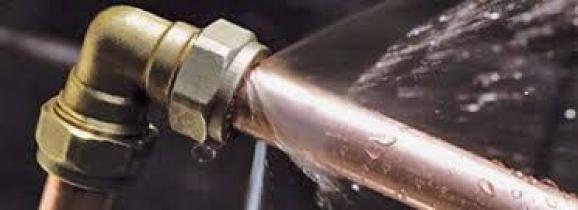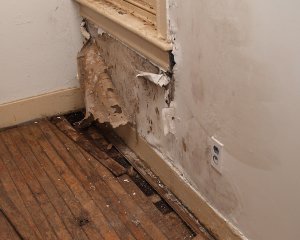Pinpoint Why Water Seepage in The Residence
Pinpoint Why Water Seepage in The Residence
Blog Article
How do you really feel in relation to Common Water Leaks In House?

Leaks not only trigger waste of water but can also cause unneeded damages to your residence and promote unwanted natural development. Sadly, water leaks could go undetected considering that the majority of the pipework in our home is concealed. By looking and comprehending for daily circumstances that trigger leakages, you can protect your house from future leakages and also unneeded damage. Today, we will certainly consider 6 leakage triggers that may be causing your pipelines to leak.
Intruding roots
A lot of water leakages start outside the house rather than inside it. If you see an abrupt reduction in water pressure, claim in your faucet, take some time to go out and examine your lawn. You could see wet patches or sinkholes in your lawn, which could mean that tree roots are getting into water lines triggering water to leak out. You can have your plumber look for breach, specifically if you have trees or hedges near your residential property.
Corroded water systems
As time goes by, your plumbing system ages and also deterioration such as rust might start eating away the pipes. This may be the source of staining or warping on your water pipes. This calls for an evaluation with your plumber quickly. Take into consideration replacing the pipelines considering that they are at a greater threat of deterioration than the more recent models if our plumbing system is old.
Defective Pipeline Joints
Pipe joints can deteriorate over time, resulting in water leaks. If you have noisy pipes that make ticking or banging sounds, particularly when the hot water is turned on, your pipe joints are possibly under a whole lot of stress.
Immediate temperature adjustments.
Extreme temperature level modifications in our pipelines can create them to broaden and acquire unexpectedly. This growth and tightening might trigger fractures in the pipelines, specifically if the temperature level are below freezing.
Poor Water Connectors
At times, a leak can be caused by loosened tubes and pipelines that supply your devices. Most of the time, changing is what triggers the loosened water Connections. You may find when it comes to a washing maker, a tube may spring a leakage as a result of shaking during the spin cycle. In case of a water connections leakage, you might discover water running directly from the supply line or pools around your appliances.
Obstructed Drains
Clogged drains could be annoying and inconveniencing, however they can in some cases wind up triggering an overflow leading to break pipes. Maintain removing any kind of materials that might go down your drains that can clog them to stay clear of such hassles.
All the above are root causes of leakages however not all water leakages result from plumbing leakages; some leakages could originate from roof leaks. All leaks need to be repaired quickly to avoid water damage.
Leakages not only create waste of water however can additionally trigger unneeded damage to your house and also advertise unwanted organic growth. By recognizing and also looking for daily circumstances that cause leaks, you can shield your home from future leaks and unnecessary damage. Today, we will look at six leakage causes that might be creating your pipelines to trickle.
At times, a leakage can be triggered by loosened pipes and pipes that provide your appliances. In situation of a water links leak, you might discover water running directly from the supply line or pools around your devices.
How To Check For Water Leak In Your Home
How To Check for Leaks
The average household's leaks can account for nearly 10,000 gallons of water wasted every year and ten percent of homes have leaks that waste 90 gallons or more per day. Common types of leaks found in the home are worn toilet flappers, dripping faucets, and other leaking valves. These types of leaks are often easy to fix, requiring only a few tools and hardware that can pay for themselves in water savings. Fixing easily corrected household water leaks can save homeowners about 10 percent on their water bills.
To check for leaks in your home, you first need to determine whether you're wasting water and then identify the source of the leak. Here are some tips for finding leaks:
Take a look at your water usage during a colder month, such as January or February. If a family of four exceeds 12,000 gallons per month, there are serious leaks.
Check your water meter before and after a two-hour period when no water is being used. If the meter changes at all, you probably have a leak.
Identify toilet leaks by placing a drop of food coloring in the toilet tank. If any color shows up in the bowl after 10 minutes, you have a leak. (Be sure to flush immediately after the experiment to avoid staining the tank.)
Examine faucet gaskets and pipe fittings for any water on the outside of the pipe to check for surface leaks.
Undetected water leaks can happen without the home or business owner even realizing. If you suspect a water leak, but not able to find the source. It is time to contact a professional water leak detection service, The Leak Doctor.
How To Find a Water Leak In Your Home
https://www.leakdoctor.com/blog/How-To-Check-For-Water-Leak-In-Your-Home_AE197.html

Do you really like more info about Common Water Leaks In House? Try to leave a remark down the page. We'd be pleased to hear your opinion about this posting. In hopes to see you back again in the near future. Enjoyed our write up? Please share it. Let other people find it. Thank-you for taking the time to read it.
Source This Article Report this page